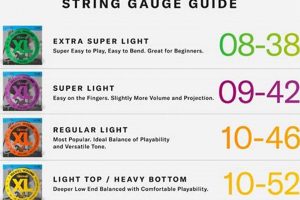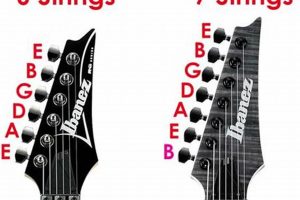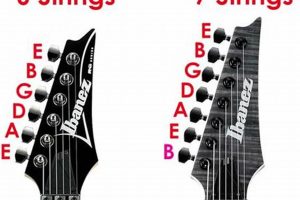How to mute guitar strings is a crucial technique that allows guitarists to control the sound of their instrument. Mastering this technique can significantly enhance your playing and open up new possibilities for your music.
Editor’s Note: Muting guitar strings is an essential skill for guitarists of all levels. It can help you create a variety of sounds and effects, and it can also help you improve your overall playing.
To mute guitar strings, you simply need to lightly touch the strings with your fretting hand. This will prevent the strings from vibrating, which will stop them from making sound. You can mute strings with either your left or right hand, and you can mute individual strings or all of the strings at once.
There are many different ways to use muting in your playing. You can use it to create a percussive sound, to add emphasis to certain notes, or to create a more subtle and nuanced sound. Muting can also be used to create space in your playing, or to transition between different sections of a song.
Here are a few tips for muting guitar strings:
- Use your fretting hand to mute the strings.
- Lightly touch the strings with your fingers.
- You can mute individual strings or all of the strings at once.
- Experiment with different muting techniques to find the ones that work best for you.
Muting guitar strings is a simple technique, but it can have a profound impact on your playing. By mastering this technique, you can open up new possibilities for your music and improve your overall playing.
1. Left-hand muting
Left-hand muting is one of the most important muting techniques for guitarists. It allows you to mute individual strings or groups of strings with your fretting hand, which can be used to create a variety of effects. For example, you can use left-hand muting to create a staccato sound, to add emphasis to certain notes, or to create a more subtle and nuanced sound.
To perform left-hand muting, simply place your fingers lightly on the strings that you want to mute. You can mute the strings behind the fret, or you can mute them in front of the fret. Experiment with different muting techniques to find the ones that work best for you.
Left-hand muting is a versatile technique that can be used in a variety of musical styles. It is an essential skill for any guitarist who wants to improve their playing and expand their sonic palette.
2. Right-hand muting
Right-hand muting is a technique that involves using the picking hand to mute the strings. This can be done in a variety of ways, but the most common method is to use the palm of the picking hand to rest on the strings. This will mute all of the strings, but you can also use your fingers to mute individual strings or groups of strings.
- Palm muting: This is the most common type of right-hand muting, and it is used to create a percussive, rhythmic sound. To perform palm muting, simply rest the palm of your picking hand on the strings, near the bridge. You can adjust the amount of muting by moving your hand closer to or further away from the bridge.
- Finger muting: This technique is used to mute individual strings or groups of strings. To perform finger muting, simply use your fingers to lightly touch the strings that you want to mute. You can mute the strings behind the fret, or you can mute them in front of the fret.
- Combination muting: This technique combines palm muting and finger muting. It allows you to mute individual strings or groups of strings, while also creating a percussive, rhythmic sound. To perform combination muting, simply use your fingers to mute the strings that you want to mute, and then rest the palm of your picking hand on the strings, near the bridge.
Right-hand muting is a versatile technique that can be used in a variety of musical styles. It is an essential skill for any guitarist who wants to improve their playing and expand their sonic palette.
3. Partial muting
Partial muting is a technique that involves muting only certain strings, while allowing others to ring. This can be used to create a variety of effects, such as adding emphasis to certain notes or creating a more complex and textured sound.
To perform partial muting, simply use your fretting hand to lightly touch the strings that you want to mute. You can mute the strings behind the fret, or you can mute them in front of the fret. Experiment with different muting techniques to find the ones that work best for you.
Partial muting is a versatile technique that can be used in a variety of musical styles. It is an essential skill for any guitarist who wants to improve their playing and expand their sonic palette.
| Benefit | Description |
|---|---|
| Allows for greater control over the sound of the guitar | By muting only certain strings, you can create a variety of effects, such as adding emphasis to certain notes or creating a more complex and textured sound. |
| Can be used to create a variety of musical styles | Partial muting is a versatile technique that can be used in a variety of musical styles, from rock to jazz to country. |
| Is an essential skill for any guitarist | Partial muting is an essential skill for any guitarist who wants to improve their playing and expand their sonic palette. |
4. Full muting
Full muting is a technique that involves muting all of the strings on the guitar. This can be done with either the left or right hand, and it can be used to create a variety of effects, such as stopping the sound of the guitar completely, or creating a percussive sound.
- To perform full muting with the left hand, simply place the palm of your hand on the strings, near the bridge. You can adjust the amount of muting by moving your hand closer to or further away from the bridge.
- To perform full muting with the right hand, simply rest the palm of your picking hand on the strings, near the bridge. You can adjust the amount of muting by moving your hand closer to or further away from the bridge.
- Full muting can be used to create a variety of effects, such as s
topping the sound of the guitar completely, or creating a percussive sound. It can also be used to create space in your playing, or to transition between different sections of a song. - Full muting is an essential technique for any guitarist who wants to improve their playing and expand their sonic palette.
In the context of “how to mute guitar strings”, full muting is a valuable technique that can be used to create a variety of effects and improve your playing. By mastering this technique, you can open up new possibilities for your music and expand your sonic palette.
5. Palm muting
Palm muting is a technique that involves using the palm of the picking hand to mute the strings. This can be done to create a variety of effects, such as a percussive sound, a more muted sound, or to create space in the music.
- Creates a percussive sound: Palm muting can be used to create a percussive sound, which can be useful for adding rhythm and texture to your playing. To create a percussive sound, simply rest the palm of your picking hand on the strings, near the bridge. You can adjust the amount of muting by moving your hand closer to or further away from the bridge.
- Creates a more muted sound: Palm muting can also be used to create a more muted sound, which can be useful for creating a more subtle and nuanced sound. To create a more muted sound, simply rest the palm of your picking hand on the strings, near the neck. You can adjust the amount of muting by moving your hand closer to or further away from the neck.
- Creates space in the music: Palm muting can also be used to create space in the music. This can be useful for creating a more dynamic sound, or for separating different sections of a song. To create space in the music, simply palm mute the strings for a period of time. You can adjust the length of the palm mute by varying the amount of time that you rest your palm on the strings.
- Examples: Palm muting is a versatile technique that can be used in a variety of musical styles, from rock to jazz to country. Some famous guitarists who use palm muting include Jimmy Page, Eddie Van Halen, and David Gilmour.
Palm muting is a valuable technique that can be used to create a variety of effects and improve your playing. By mastering this technique, you can open up new possibilities for your music and expand your sonic palette.
6. Fret-hand muting
Fret-hand muting is a technique that involves using the fingers of your fretting hand to mute the strings. This can be done to create a variety of effects, such as a percussive sound, a more muted sound, or to create space in the music.
- Creates a percussive sound: Fret-hand muting can be used to create a percussive sound, which can be useful for adding rhythm and texture to your playing. To create a percussive sound, simply tap the strings with your fingers, behind the fret. You can adjust the amount of muting by varying the amount of pressure that you apply to the strings.
- Creates a more muted sound: Fret-hand muting can also be used to create a more muted sound, which can be useful for creating a more subtle and nuanced sound. To create a more muted sound, simply rest your fingers lightly on the strings, behind the fret. You can adjust the amount of muting by varying the amount of pressure that you apply to the strings.
- Creates space in the music: Fret-hand muting can also be used to create space in the music. This can be useful for creating a more dynamic sound, or for separating different sections of a song. To create space in the music, simply fret-hand mute the strings for a period of time. You can adjust the length of the fret-hand mute by varying the amount of time that you rest your fingers on the strings.
Fret-hand muting is a versatile technique that can be used to create a variety of effects and improve your playing. By mastering this technique, you can open up new possibilities for your music and expand your sonic palette.
7. Selective muting
Selective muting is a technique that involves muting specific strings while allowing others to ring. This can be used to create a variety of percussive sounds, from sharp staccato notes to more subtle ghost notes.
To perform selective muting, simply use your fretting hand to lightly touch the strings that you want to mute. You can mute the strings behind the fret, or you can mute them in front of the fret. Experiment with different muting techniques to find the ones that work best for you.
Selective muting is a versatile technique that can be used in a variety of musical styles. It is an essential skill for any guitarist who wants to improve their playing and expand their sonic palette.
| Benefit | Description |
|---|---|
| Allows for greater control over the sound of the guitar | By muting specific strings, you can create a variety of percussive sounds, from sharp staccato notes to more subtle ghost notes. |
| Can be used to create a variety of musical styles | Selective muting is a versatile technique that can be used in a variety of musical styles, from rock to jazz to country. |
| Is an essential skill for any guitarist | Selective muting is an essential skill for any guitarist who wants to improve their playing and expand their sonic palette. |
8. Rhythmic muting
Rhythmic muting is a technique that involves using muting to create rhythmic patterns. This can be done with either the left or right hand, and it can be used to create a variety of effects, such as adding syncopation to a rhythm or creating a more percussive sound.
To perform rhythmic muting, simply mute the strings at regular intervals. You can mute the strings with either your fretting hand or your picking hand, and you can mute individual strings or all of the strings at once. Experiment with different muting techniques to find the ones that work best for you.
Rhythmic muting is a versatile technique that can be used in a variety of musical styles. It is an essential skill for any guitarist who wants to improve their playing and expand their sonic palette.
Here are some examples of how rhythmic muting can be used in different musical styles:
- Rock: Rhythmic muting is often used in rock music to create a syncopated rhythm. This can be done by muting the strings on the offbeats, or by muting the strings in a syncopated pattern.
- Funk: Rhythmic muting is also commonly used in funk music to create a percussive sound. This can be done by muting the strings on the downbeats, or by muting the strings in a funky rhythm.
- Jazz: Rhythmic muting can be used in jazz music t
o create a variety of effects, such as adding syncopation to a rhythm or creating a more percussive sound. This can be done by muting the strings in a variety of ways, depending on the desired effect.
Rhythmic muting is a powerful technique that can be used to add interest and complexity to your playing. By mastering this technique, you can open up new possibilities for your music and expand your sonic palette.
| Benefit | Description |
|---|---|
| Allows for greater control over the sound of the guitar | By muting the strings at regular intervals, you can create a variety of rhythmic patterns, which can add interest and complexity to your playing. |
| Can be used to create a variety of musical styles | Rhythmic muting is a versatile technique that can be used in a variety of musical styles, from rock to funk to jazz. |
| Is an essential skill for any guitarist | Rhythmic muting is an essential skill for any guitarist who wants to improve their playing and expand their sonic palette. |
9. Dynamic muting
Dynamic muting is a technique that involves using muting to control the volume and sustain of the strings. This can be done with either the left or right hand, and it can be used to create a variety of effects, such as creating a more subtle sound, adding emphasis to certain notes, or creating a more percussive sound.
- Controlling volume: Dynamic muting can be used to control the volume of the strings. By muting the strings more or less, you can create a variety of volume levels. This can be useful for creating a more subtle sound, or for adding emphasis to certain notes.
- Controlling sustain: Dynamic muting can also be used to control the sustain of the strings. By muting the strings more or less, you can control how long the strings ring out. This can be useful for creating a more percussive sound, or for creating a more legato sound.
- Creating a variety of effects: Dynamic muting can be used to create a variety of effects, such as creating a more subtle sound, adding emphasis to certain notes, or creating a more percussive sound. This can be a powerful tool for guitarists who want to expand their sonic palette.
Dynamic muting is a versatile technique that can be used in a variety of musical styles. It is an essential skill for any guitarist who wants to improve their playing and expand their sonic palette.
FAQs on How to Mute Guitar Strings
Muting guitar strings is a fundamental technique that allows guitarists to control the sound of their instrument. Here are answers to some frequently asked questions about this technique:
Question 1: Why is muting guitar strings important?
Muting guitar strings is important because it allows guitarists to control the sound of their instrument. By muting the strings, guitarists can create a variety of effects, such as adding emphasis to certain notes, creating a more subtle sound, or creating a more percussive sound.
Question 2: What are the different ways to mute guitar strings?
There are a variety of ways to mute guitar strings, including using the left hand, right hand, or a combination of both. Some common muting techniques include palm muting, fret-hand muting, selective muting, rhythmic muting, and dynamic muting.
Question 3: Which muting technique should I use?
The best muting technique to use will depend on the desired effect. For example, if you want to create a percussive sound, you might use palm muting. If you want to create a more subtle sound, you might use fret-hand muting. Experiment with different muting techniques to find the ones that work best for you.
Question 4: How can I practice muting guitar strings?
There are a number of ways to practice muting guitar strings. One simple exercise is to practice muting individual strings with your fretting hand. Another exercise is to practice palm muting by resting the palm of your picking hand on the strings near the bridge.
Question 5: What are some common mistakes that guitarists make when muting strings?
Some common mistakes that guitarists make when muting strings include muting the strings too hard, which can kill the sound of the guitar, and muting the strings at the wrong time, which can create unwanted noise.
Question 6: How can I improve my muting technique?
There are a number of ways to improve your muting technique. One is to practice regularly. Another is to experiment with different muting techniques to find the ones that work best for you. Finally, you can also listen to recordings of professional guitarists to hear how they use muting to create different effects.
Muting guitar strings is a valuable technique that can help guitarists improve their playing and expand their sonic palette. By mastering this technique, guitarists can open up new possibilities for their music.
Transition to the next article section: Advanced Muting Techniques
Tips on How to Mute Guitar Strings
Muting guitar strings is a fundamental technique that allows guitarists to control the sound of their instrument. Mastering this technique can significantly enhance your playing and open up new possibilities for your music.
Tip 1: Use your fretting hand to mute the strings.
This is the most common way to mute strings, and it can be used to mute individual strings or all of the strings at once. To mute a string with your fretting hand, simply place your finger lightly on the string behind the fret. You can also use your fretting hand to create partial mutes, which can add a percussive element to your playing.
Tip 2: Use your picking hand to mute the strings.
This technique is known as palm muting, and it is often used to create a percussive sound. To palm mute, simply rest the palm of your picking hand on the strings near the bridge. You can adjust the amount of muting by moving your hand closer to or further away from the bridge.
Tip 3: Use a combination of your fretting hand and picking hand to mute the strings.
This technique gives you the most control over the sound of your muting. You can use your fretting hand to mute individual strings, and your picking hand to mute the remaining strings. This allows you to create a variety of different muting effects.
Tip 4: Experiment with different muting techniques.
There is no one right way to mute guitar strings. Experiment with different techniques to find the ones that work best for you and the sound you want to achieve.
Tip 5: Practice muting regularly.
The more you practice muting, the better you will become at it. Try to incorporate muting into your daily practice routine, and you will quickly see your skills improve.
Summary:
- Muting guitar strings is a fundamental technique that can significantly enhance your playing.
- There are a variety of muting techniques that you can use.
- Experiment with different muting techniques to find the ones that work best for you.
- Practice muting regularly to improve your skills.
Conclusion:
Muting guitar strings is a valuable technique that can help you improve your playing and expand your so
nic palette. By mastering this technique, you can open up new possibilities for your music.
How to Mute Guitar Strings
Muting guitar strings is a fundamental technique that all guitarists should master. It allows you to control the sound of your instrument, create a variety of effects, and improve your overall playing. In this article, we have explored the different ways to mute guitar strings, including left-hand muting, right-hand muting, and a combination of both.
We have also provided tips on how to practice muting and how to use it to create different effects. By following the advice in this article, you can quickly improve your muting skills and open up new possibilities for your music.







